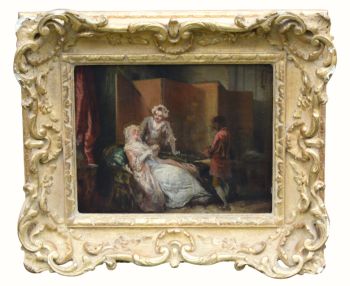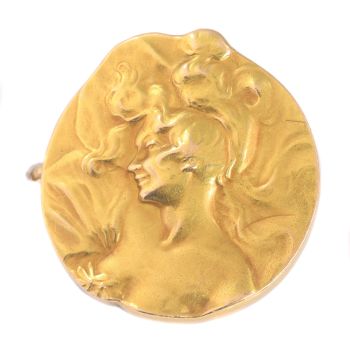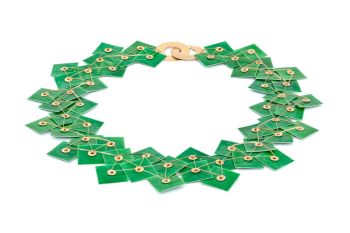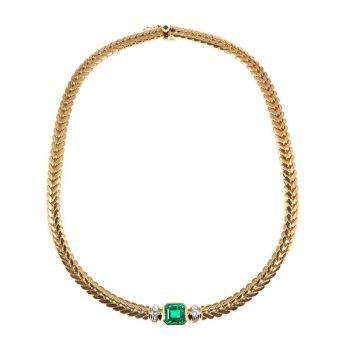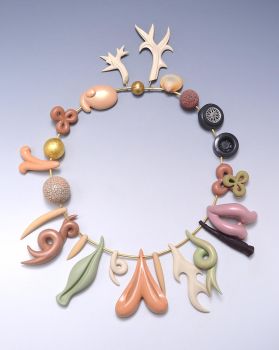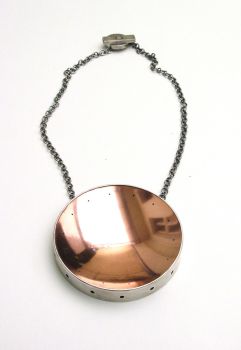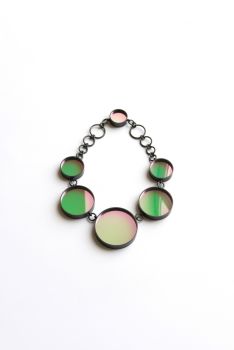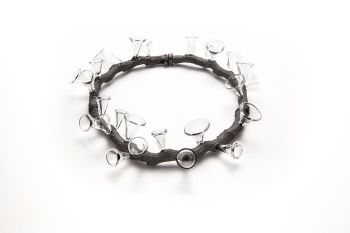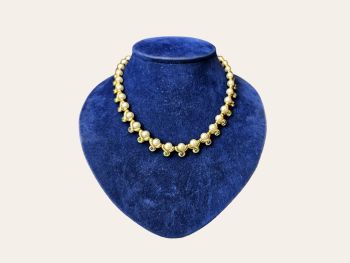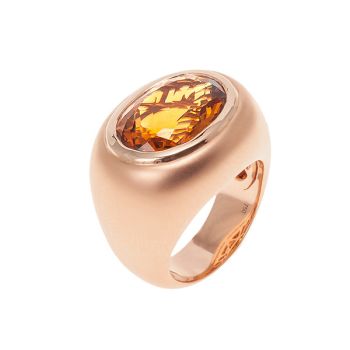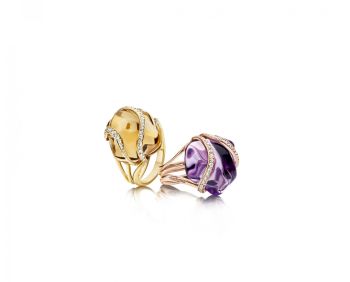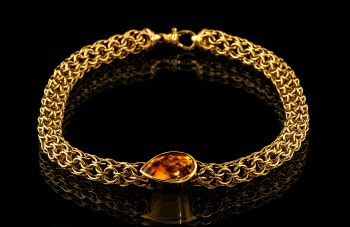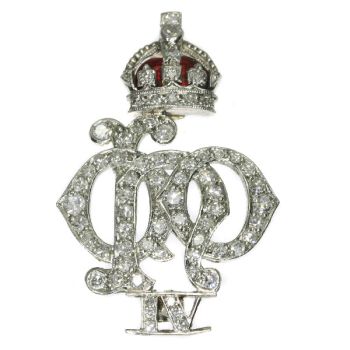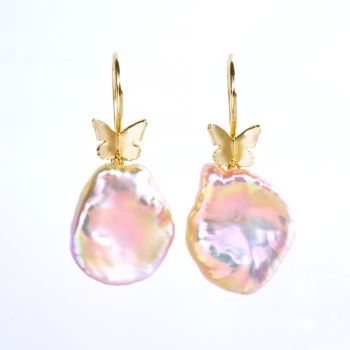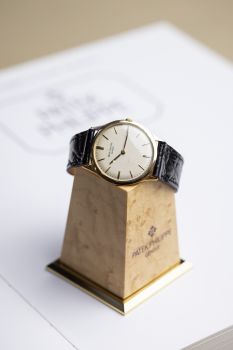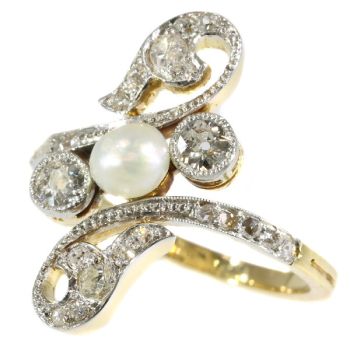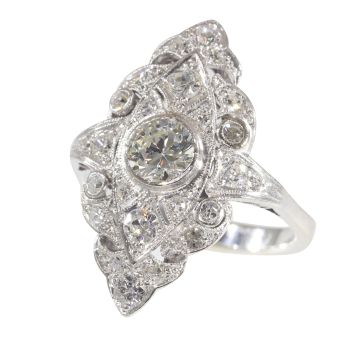Antica collana in filigrana d'oro cannetille lavorata con 15 grandi pietre di citrino 1820
Artista Sconosciuto
citrinoFiligranaOroPietra preziosa
€ 21.000
Adin Fine Antique Jewellery
- A proposito di opere d'arte
This fiery 18K yellow gold Georgian necklace of cannetille work folds around your neck as a gentle swirling summer breeze. Every of these 15 degrading rectangular cut citrines gleam out of their granule topped setting fused on a scintillating corona offiligree, entirely composed with tendrils, scrolls, granules and spirals. Although this delicate necklace looks as ethereal as lace, still how clear it is that it will never loose its glory and it will keep on outstanding the test of time.
Antique jewelry object group: necklace
Condition: excellent condition
- (more info on our condition scale)
Country of origin:Although it does not carry any legible control marks we believe this to be of French origin.
Style: Georgian - Georgian style is the name given in most English-speaking countries to the set of styles current between 1720 and 1840. It is eponymous for the first four British monarchs of the House of Hanover—George I of Great Britain, George II of GreatBritain, George III of the United Kingdom, and George IV of the United Kingdom—who reigned in continuous succession from August 1714 to June 1830.
- See also: Georgianor more info on styles
Period: ca. 1820
- (events and facts in 1820)
Material: 18K yellow gold
- (more info on precious metals)
Technique: Filigree (formerly written filigrann or filigrane) is a delicate kind of jewel work made with twisted threads usually of gold and silver or stitching of the same curving motifs. It often suggests lace and French from 1660 to the late 19th century. Itshould not be confused with ajoure jewellery work; while both have many open areas, filigree involves threads being soldered together to form an object and ajoure involves holes being punched, drilled, or cut through an existing piece of metal. (from: Wikipedia)
cannetille: This specific filigree technique, which is the technique of twisting or plaiting a thin gold wire into refined motifs, was popular in traditional Spanish and Portuguese jewellery. It became hugely popular in London and Paris in the 1830’s.
Precious stones: 15 citrines
- (more info on precious stones)
Birthstones: Citrine is the birthstone (or month stone) for November.
- (more info on birthstones)
Hallmarks: No trace.
- (more info on hallmarks)
Dimensions: length 46,50 cm (18,31 inch)
Weight: 72,00 gram (46,30 dwt)
Reference Nº: 14171-0037
Copyright photography: Adin, fine antique jewelry
- A proposito di opere artista
Può succedere che un artista o un creatore sia sconosciuto.
Alcune opere non sono determinate da chi sono state realizzate o sono state realizzate da (un gruppo di) artigiani. Esempi sono statue dell'antichità, mobili, specchi o firme non chiare o leggibili ma anche alcune opere non sono affatto firmate.
Inoltre puoi trovare la seguente descrizione:
•"Attribuito a …." A loro avviso probabilmente opera dell'artista, almeno in parte
•“Studio di ….” o “Officina di” A loro avviso un'opera eseguita nello studio o nella bottega dell'artista, eventualmente sotto la sua supervisione
•“Cerchio di…” A loro avviso un'opera del periodo dell'artista che mostra la sua influenza, strettamente legata all'artista ma non necessariamente al suo allievo
•"Stile di..." o "Seguace di..." A loro avviso un'opera eseguita nello stile dell'artista ma non necessariamente da un allievo; può essere contemporaneo o quasi contemporaneo
•“Modalità di…” A loro avviso un'opera nello stile dell'artista ma di epoca successiva
•"Dopo …." A loro avviso una copia (di qualsiasi data) di un'opera dell'artista
•“Firmato…”, “Datato…” o “Iscritto” A loro avviso l'opera è stata firmata/datata/inscritta dall'artista. L'aggiunta di un punto interrogativo indica un elemento di dubbio
•"Con firma....", "Con data...", "Con iscrizione..." o “Riporta firma/data/iscrizione” a loro avviso la firma/data/iscrizione è stata aggiunta da qualcuno diverso dall'artista
Sei interessato ad acquistare questa opera d'arte?
Artwork details
Related artworks
Artista Sconosciuto
Gobelet vénitien ailé1624 - 1626
Prezzo su richiestaPeter Korf de Gidts - Antiquairs
1 - 4 / 12Artista Sconosciuto
Un gobelet anglais-néerlandais1738
Prezzo su richiestaPeter Korf de Gidts - Antiquairs
1 - 4 / 22- 1 - 4 / 24
- 1 - 4 / 24
- 1 - 4 / 12









